Secret Goddess: Guhyeshwari Temple
Guhyeshwari Temple (guhya – Sanskrit meaning secret, Eshwari – goddess) is one of the ancient temples located in Kathmandu, Nepal. It is the most revered temple among tantric worshippers and general Hindus. It is believed to be the Shakti chair of Pashupatinath Temple.
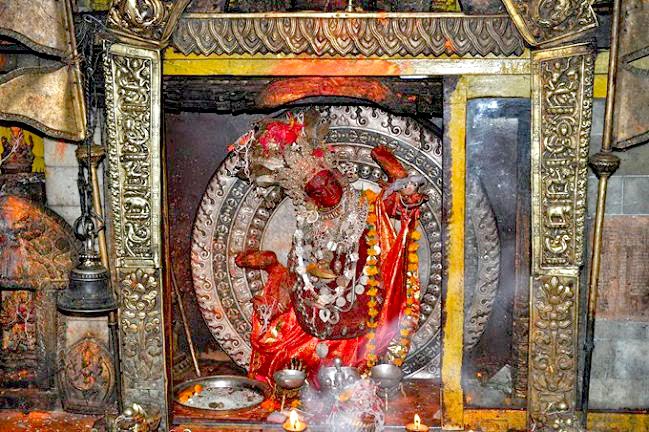
Contents
- 1 Significance:
- 2 Legend:
- 3 Beliefs:
- 4 Places to visit near Guhyeshwari Temple Kathmandu:
- 5 FAQ:
- 5.0.1 Where is Guhyeshwari Temple located?
- 5.0.2 Who is the presiding deity of Guhyeshwari Temple?
- 5.0.3 What is the significance of Guhyeshwari Temple?
- 5.0.4 What are the temple’s opening hours?
- 5.0.5 Are there any entry fees to visit the temple?
- 5.0.6 How to reach Guhyeshwari Temple?
- 5.0.7 What are the major festivals celebrated at the temple?
- 5.0.8 Is there a dress code for visiting the temple?
- 5.0.9 Is photography allowed inside the temple?
- 5.0.10 Are there any accommodation facilities near the temple?
- 6 How to reach Guhyeshwari Temple:
Significance:
According to the mythology of Daksha yagna and Sati self-immolation, it is the holy place where “Both Knees” fell down. Maa Sati has worshiped with Guhyeshwari Devi and Bhairav form of Lord Shiva as Kapali.
The name “Guhyarupini” is mentioned in Lalitha Sahasranamam which means the form of god which is secret and beyond human perception. Based on the information available Guhyeshwari temple was built during the reign of King Shankar Dev who was a preacher of Tantric art. It was later renovated by King Pratap Malla in the 17th Century.
We find tantric rites followed in the temple premises and idols of the deity are made of gold and silver. Devotees offer eggs and wine to the goddess to please and fulfill their desires. During the prayer, we find several musical instruments are used which were presented to the goddess by King Rana Bahadur.
During the festive season of Navratri, the Nepal king along with his family members has a holy bath in the Bagmati river and worships the goddess. Here non-Hindus are prohibited from entering into the temple.
Read More>> Biraja Temple Shakti Peeth Jaipur
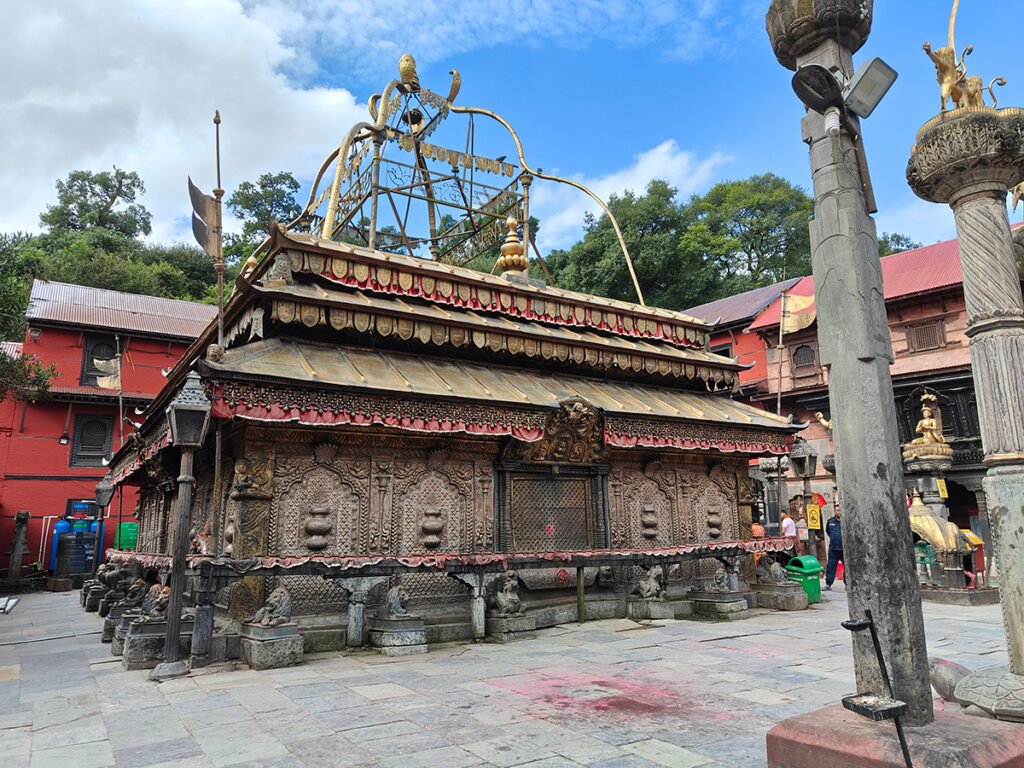
Legend:
The history of the Guhyeshwari Temple is closely linked to the legend of Sati, the consort of Lord Shiva. According to legend, Sati’s father, Daksha Prajapati, performed a sacrifice but did not invite Shiva. Sati was enraged by her father’s insult and immolated herself in the fire of the sacrifice. Shiva was grief-stricken by Sati’s death and carried her body around the world in a dance of destruction.
Vishnu, in order to calm Shiva, used his Sudarshan Chakra to dismember Sati’s body. Her body parts fell at different places on earth, and these places became known as Shakti Peethas. The Guhyeshwari Temple is believed to be the place where Sati’s female genitals fell.
The Guhyeshwari Temple is mentioned in several ancient Hindu texts, including the Kali Tantra, Chandi Tantra, and Shiva Tantra Rahasya. The temple is believed to have been built during the Lichhavi period (300-879 AD). However, the current temple structure was built in the 17th century by King Pratap Malla of the Malla dynasty.
The Guhyeshwari Temple is a popular pilgrimage site for Hindus from all over the world. The temple is especially revered by Tantric worshippers. The temple is also considered to be a sacred place for Vajrayana Buddhists, who identify Guhyeshwari with the goddess Vajravarahi.
The Guhyeshwari Temple is a beautiful and serene place. The temple complex is surrounded by lush trees and gardens. The main temple building is in the traditional Newari pagoda style of architecture. The temple is adorned with intricate carvings and sculptures.
Read More>> Jalandhar Shakti Peeth Devi Talab Mandir
Beliefs:
- It is believed that one who marries at Guhyeshwari temple will be the soul mate for the next 6 births.
- We find women worshipping goddesses to attain full health for their husbands.
- One who worships goddess Guhyeshwari will attain victory over their enemies.
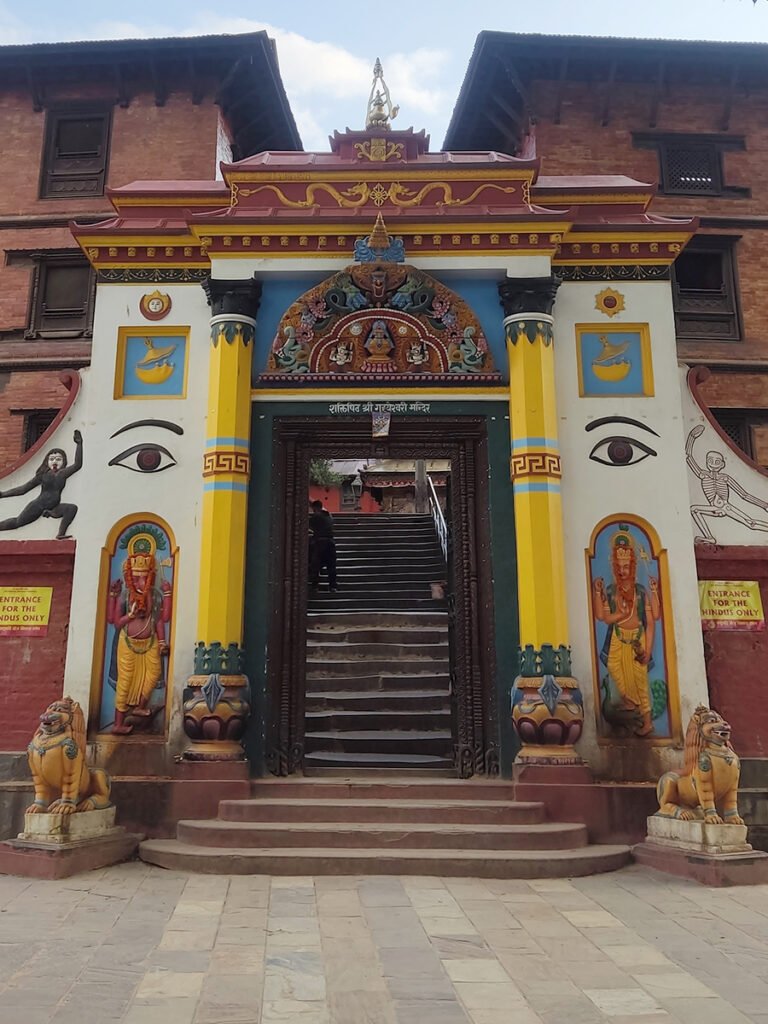
Places to visit near Guhyeshwari Temple Kathmandu:
Pashupatinath Temple: This UNESCO World Heritage Site is one of the holiest Hindu temples in Nepal. It’s dedicated to Lord Shiva and is known for its impressive architecture and religious significance.
Boudhanath Stupa: This ancient stupa is one of the largest in Nepal and is a UNESCO World Heritage Site. It’s a major pilgrimage site for Buddhists and features a unique mandala design.
Swayambhunath Stupa (Monkey Temple): This iconic stupa is also a UNESCO World Heritage Site and offers panoramic views of Kathmandu Valley. It’s known for the resident monkey population and its spiritual significance.
Kathmandu Durbar Square: A historic square with numerous palaces, courtyards, and temples that reflect Nepal’s rich cultural heritage. It’s another UNESCO World Heritage Site.
Patan Durbar Square: Located in Lalitpur, this is another UNESCO-listed historic square featuring Newari architecture, temples, and palaces.
Thamel: A vibrant neighborhood in Kathmandu known for its bustling streets, shops, restaurants, and nightlife. It’s a great place for shopping and dining.
Garden of Dreams: A tranquil garden in the heart of Kathmandu, offering a peaceful escape from the city’s hustle and bustle.
Narayanhiti Palace Museum: The former royal palace is now a museum, providing insight into Nepal’s royal history and culture.
Bhaktapur Durbar Square: Located in Bhaktapur, a nearby city, this square is famous for its well-preserved historic architecture, temples, and art.
Changu Narayan Temple: An ancient Hindu temple dedicated to Lord Vishnu, known for its intricate stone carvings and as another UNESCO World Heritage Site.
Budhanilkantha Temple: This temple is home to a large reclining statue of Lord Vishnu, carved from a single stone. It’s a popular pilgrimage site.
Namo Buddha Stupa: Located a bit further from Kathmandu, this stupa is associated with the Buddha’s life and teachings. It’s a serene and spiritually significant place.
Read More>> Manasa Shakti Peeth Manasa Sarovar
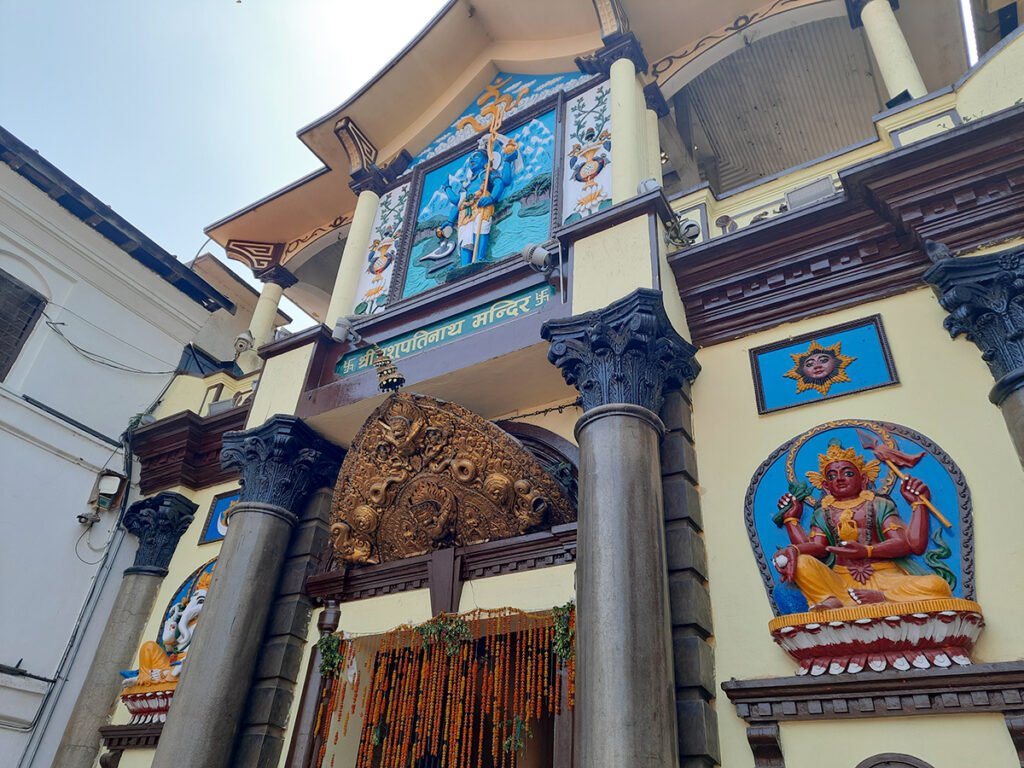
FAQ:
Where is Guhyeshwari Temple located?
Guhyeshwari Temple is situated in the capital city of Nepal, Kathmandu, near the famous Pashupatinath Temple.
Who is the presiding deity of Guhyeshwari Temple?
The presiding deity of the temple is Goddess Guhyeshwari, who is regarded as a form of Goddess Parvati. She is highly venerated by devotees.
What is the significance of Guhyeshwari Temple?
Guhyeshwari Temple is considered one of the Shakti Peethas, a group of sacred temples dedicated to the goddess Shakti. It holds great religious and cultural importance for Hindus, particularly in Nepal.
What are the temple’s opening hours?
The temple typically opens in the morning and remains open throughout the day for darshan (viewing). Specific opening and closing times may vary, so it’s advisable to check with the temple authorities for the most up-to-date information.
Are there any entry fees to visit the temple?
There are usually no entry fees to visit the temple. However, donations and contributions to the temple are appreciated.
How to reach Guhyeshwari Temple?
Guhyeshwari Temple is located in Kathmandu, which is accessible by road. The temple is situated near the Pashupatinath Temple, a well-known landmark in the city.
What are the major festivals celebrated at the temple?
Guhyeshwari Temple celebrates various Hindu festivals, with special observance during Navaratri (nine nights of worship) and Maha Shivaratri, a festival dedicated to Lord Shiva, as the temple is closely associated with Pashupatinath.
Is there a dress code for visiting the temple?
Devotees are generally expected to wear modest and respectful attire when visiting the temple. Traditional attire is often preferred.
Is photography allowed inside the temple?
Photography rules may vary. It’s advisable to inquire about the photography policy at the temple entrance or check with temple authorities.
Are there any accommodation facilities near the temple?
Kathmandu offers a variety of accommodation options, including hotels, guesthouses, and lodges, to cater to the needs of pilgrims and tourists. It’s a good idea to book accommodations in advance, particularly during peak visiting seasons.
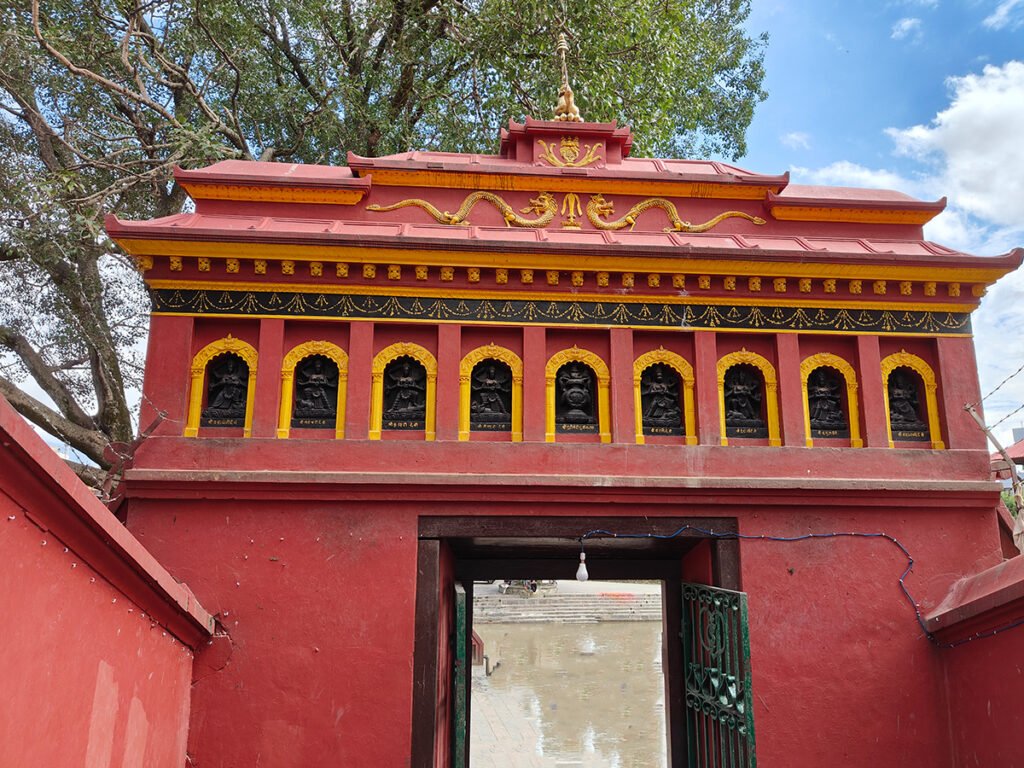
How to reach Guhyeshwari Temple:
Arriving in Kathmandu:
You will need to first reach Kathmandu, the capital city of Nepal. You can do this by air, as Tribhuvan International Airport in Kathmandu is well-connected to several major cities in Asia.
Getting to Guhyeshwari Temple:
Guhyeshwari Temple is located within the Kathmandu Valley, not far from the city center. Here’s how you can get there from Kathmandu:
By Taxi: The most convenient way to reach the temple is by taking a taxi from your location in Kathmandu. Simply tell the driver to take you to Guhyeshwari Temple (pronounced “Goo-yesh-wari”). It’s a short drive, and taxis are readily available.
By Public Transportation: You can also take a local bus or microbus to reach Guhyeshwari Temple. Public transportation is a more affordable option, but it may involve multiple transfers, so it’s best to ask locals or inquire at the bus stations for the best route.
Trekking to the Temple:
Guhyeshwari Temple is located on a hill, and it requires a short uphill walk or climb to reach the temple premises. It’s not a strenuous trek, but wear comfortable shoes and be prepared for a bit of elevation.
Opening Hours and Visiting Times:
It’s important to note that the temple may have specific opening and closing hours. Generally, it is open for darshan (viewing) during the daytime. However, it’s recommended to check with the temple authorities or local guides for the most up-to-date information on visiting times.
Dress Code and Etiquette:
When visiting Guhyeshwari Temple, ensure you are dressed modestly, covering your shoulders and legs. Please respect the local customs and traditions, and maintain a respectful and quiet demeanor while inside the temple premises.
Guided Tours:
If you prefer a guided experience, you can book a tour of Kathmandu, which may include a visit to Guhyeshwari Temple along with other significant sites in the city.
